There’s no doubt, camping and being outside is great. But why would you want to give up the luxuries of staying at a camp site? At the bare minimum you usually have access to clean running water, toilets and a shower.
That’s all very well and good but you’re not exactly out in the wilds are you?
Don’t get me wrong, I enjoy car camping and sometimes it’s easier to stay at a campsite for a quick getaway. What I don’t like is being woken up by screaming kids at 4am and having a beautiful view spoiled by a 16 man palace with awnings, radio antenna and a carport that makes the Taj Mahal look small.
For me, part of being outside is getting away from others and being more closely connected with the natural environment. You just can’t do that when you’re at a campsite.
So, what’s the answer?
A little thing called wild camping. Getting off the beaten track and heading away from civilisation. The clue is in the name. It’s ‘wild’ camping. There’s no shower blocks or washing up stations. Just you and nature.
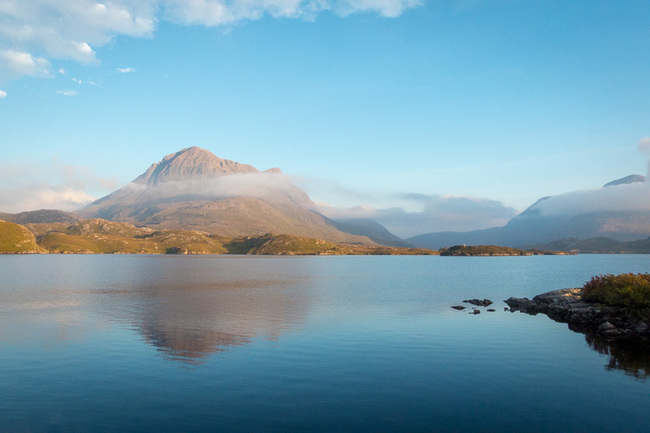
Wild camping allows you to wake up to views like this.
It can be a little scary to head off without a place to stay, especially the first time. What do I pack? How will I wash? Where can I go? Once you’ve done it once, I promise, you’ll never look back.
Here’s some essential tips and information to get you wild camping in no time.
Where can you go wild camping?
Probably the first question you’re going to ask and it’s not a straightforward one to answer, especially in the UK. We’re a nation of landowners which means that you can’t just camp anywhere you like without getting permission.
Many people do still wild camp without landowner’s permission as quite often it’s either impossible or impractical to track down who owns the land. You do this at your own risk so be prepared to move immediately if you’re found and asked to leave.
If you’re going to do this then make sure you set up camp late and leave early. It goes without saying that you should leave no trace that you ever stayed there. You wouldn’t like someone lighting fires in your back garden would you?
In England and Wales your options (at least legally) are very limited. Dartmoor National Park is the only place in England where you have a legal right to camp in certain areas. You can download a map which shows you where you can and can’t camp. They also have military firing ranges which you need to keep away from at particular times.
The Lake District is the other exception. While you can’t legally wild camp there without landowner’s permission, it is tolerated as long as you follow certain guidelines, including camping well away from towns and villages and leaving no trace of your stay.
Scotland is where it’s at.
Thanks to their very enlightened attitude to land access, in Scotland you are legally allowed to wild camp on most unenclosed land. That means not in a farmer’s field or someone’s garden. And don’t camp next to a road either (but why would you?).
If you’re looking to go wild camping for any period of time then I’d suggest heading to Scotland. Not only for their great access laws but also because the scenery is breathtaking.
What about heading further afield?
Laws vary greatly from country to country so it’s best to do some research before you go. In Scandinavia they have similar access rights to Scotland but places like France or Greece are less liberal. Check out this article from the Guardian for more information on wild camping in Europe.
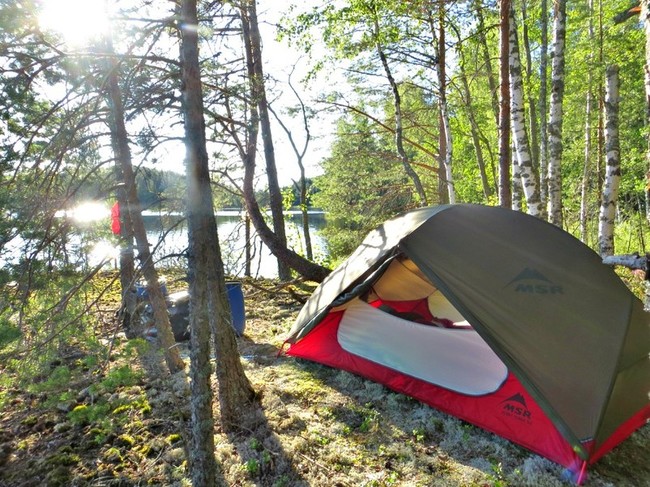
Wild camping in Finland, next to Lake Saimaa.
In countries such as the USA and Canada land rights differ in every state or province as well as in national or provincial parks. You’ll need to check out the specific guidelines for the area that you’re travelling to as some places require permits while in others camping may be prohibited at certain times of the year.
Where should you pitch your shelter?
So you’ve picked a route and headed out. That’s great, you’re well on your way, but where should you pitch your tent?
Firstly you should make sure that you’re following the rules above depending on the area that you’re visiting. As a general rule you should keep away from roads and try to stay out of sight. That usually means finding higher ground away from farms and houses.
Make sure that you’re not pitching your tent in an area that’s likely to flood. There’s nothing worse than waking up in the middle of the night to the sound of running water beneath you. Try to find raised areas rather than ditches as these are less likely to become waterlogged in a downpour.
Never underestimate the power of the wind. It has the ability to pick your tent up and rip it from the ground. Make sure you find a sheltered spot and peg out all your guy-lines. It might seem calm when you go to bed but the wind can quickly pick up. Check the forecast before you go out but as a general rule in the UK the prevailing wind comes from the South West. Bear that in mind when picking a spot.
What do you need to bring?
The answer to this question depends on the type of trip you’re taking and the time of year. The equipment and clothing choices will be different if you’re travelling by canoe than if you’re backpacking. They’ll also be different if you’re heading out in summer or winter.
I’d suggest going for your first wild camping trip in the summer having checked that the forecast is likely to be good. You’ll have less to worry about and more margin for error if you forget to bring something.
There are, however, some fundamentals that you’ll want to make sure you have before heading out, such as:
- Shelter
- Sleeping bag and sleeping mat
- Stove and cooking equipment
- Food
- Water bottle
- Torch
- Water filter or pot for boiling (if you’re heading out for more than a night)
- Sensible outdoor clothing and footwear
- Map and compass (and know how to use them)
- First aid kit
- Whistle and mobile phone.
This doesn’t have to be expensive equipment, especially if you’re not sure if you’re going to enjoy it. If you love camping already than you’re pretty good to go with what you’ve got.
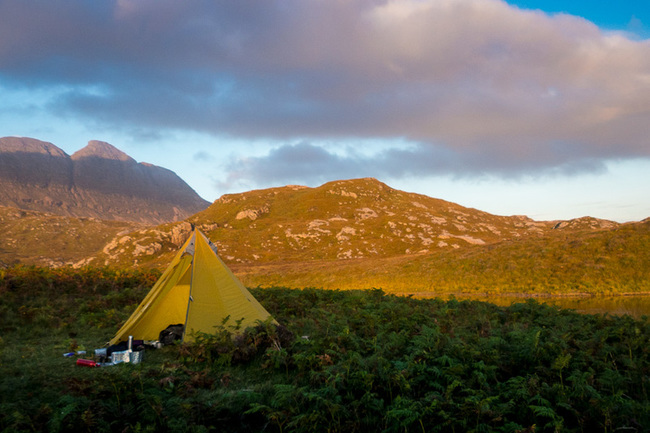
A small, lightweight tent like this is ideal for wild camping.
One thing to consider is the weight and bulk of what you’re carrying. If you’re heading out on foot then don’t bring the 6 man tent and wood burning stove. Make sure that you can comfortably carry everything you take as you won’t be camped right next to your car.
Is it okay to light a fire?
Again, this depends on where you go. In some areas lighting fires is strictly prohibited so make sure you know if fires are allowed.
Some people would argue that you shouldn’t have a camp fire at all as it does too much damage to the environment. In some respects I would agree. If you don’t know how to construct and maintain a fire in a way that minimises the impact on the area then no, you shouldn’t have one.
It’s awful to spend hours getting away from civilization only to find an ugly scorched ring on the ground littered with half burnt logs, just because someone didn’t think about what they were doing. It spoils the whole feel of an area.
That said, I love camp fires. I can happily spend hours staring into the flames on a long evening. There’s something magical about having a fire. Perhaps it’s the way that it connects us to our ancestors that would have relied on it for warmth and to cook.
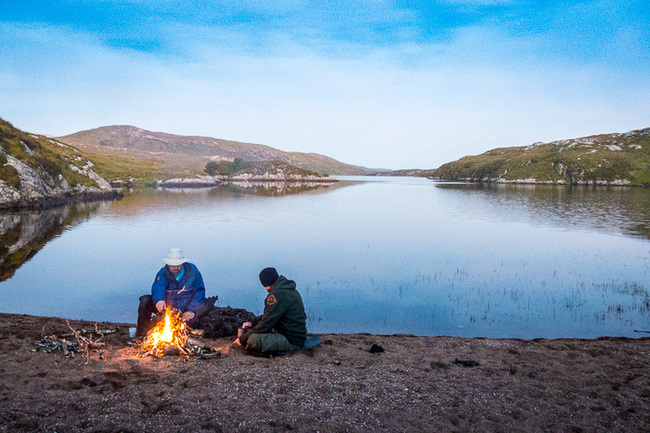
It’s wonderful to have an open fire. Make sure you don’t make it bigger than you need and leave no trace of it after you’ve finished.
Here’s some do’s and don’t to make sure that you leave no trace of your fire:
- Don’t light a fire directly on vegetation
- Don’t build it any bigger than you need
- Don’t create a ring of rocks around the fire
- Do make sure that all logs have been completely burnt
- Do douse it thoroughly with water once you’ve finished.
- Do scatter the ashes
- Do return the fire area to the condition it was in beforehand.
If you don’t need a fire or aren’t camped in a suitable area to have one then it’s best to bring a stove. I would carry one anyway as a backup just in case you can’t have a fire where you’d planned.
“Take nothing but pictures, leave nothing but footprints, kill nothing but time.”Anon
As well as making sure that you leave no trace of your fire, you should do your best to not disturb the natural environment that you are travelling through.
- View wildlife from a distance and don’t leave food around for animals to pick up.
- Carry out everything that you bring with you.
- If you need to wash yourself or dishes, make sure you do so at least 100m from any lakes, streams or rivers.
- Don’t stay more than one or two nights in the same spot to allow the area to recover.
You can find more information about leave no trace principles from the Wilderness Society.
How do you go to the toilet?
I remember wondering about how to go to the toilet before I embarked on my first wild camping experience. It seems a bit embarrassing to ask someone about how to conduct one of our most natural and necessary functions but it’s worth knowing how to do your ‘business’ while out in the wild ahead of time.
If you’re just going for a pee then there’s little to worry about other than making sure no one’s around to see. Urine is sterile so you’re not going to do any harm. The fact that Bear Grylls drinks his own urine so often should be proof enough (though I’m not going to try it).
So, getting down to business, what do you need to know about going for a poop in the wild?
Firstly, make sure that you’re nowhere near camp or any water sources. That means at least 100m, preferably more. Not only will your camp mates thank you but so will the environment, and especially the next people to drink from that stream.
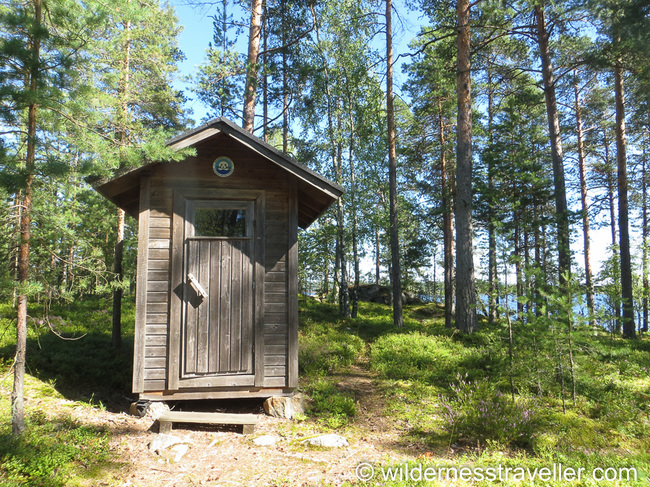
You can’t rely on one of these to be there when you need it.
If you are in a group, the best method is to designate one digging tool and take it in turns to use it. Make sure everyone knows where it is and if it’s missing then you know someone else is going to the toilet.
Once you’ve found a suitable spot, dig a hole in the ground about 6 inches deep. You can use a trowel, a stick or even a spare tent peg if necessary. Keep the soil to one side as you’re going to use that to cover up the hole once you’re finished.
Do your business and burn any toilet paper in the hole. That’s important as paper doesn’t biodegrade quickly. If there’s a danger of starting a bigger fire then pack your toilet paper out with you.
Once you’ve finished, cover the hole back up and return any dead leave of twigs back where they were. If you’ve used any sanitary products, these must be taken out with you as animals will smell them and dig them up.
It should go without saying that hygiene is very important especially if you’re about to handle any food afterwards. Bring some antibacterial wipes or hand sanitizer with you to make sure that you thoroughly clean your hands afterwards. I put all these items including a cigarette lighter in a small dry bag that I carry with me when going to the toilet.
Where do you get clean water from?
If you’re only staying out for a night then clearly you can just bring the water you need with you. However, if you’re going to wild camp for any length of time then you’re going to need to collect more water as you go.
You don’t have the luxury of getting water out of a tap unless your route takes you through a town. So how and where do you get water that’s safe to drink?
The first thing to consider is where you’re getting the water from. A stagnant, green pool is probably not the best place, nor is anywhere near animal activity such as livestock. See that outflow pipe spewing out into the lake? That’s right, not a good spot either.
This is also why you go to toilet at least 100m from any source of water.
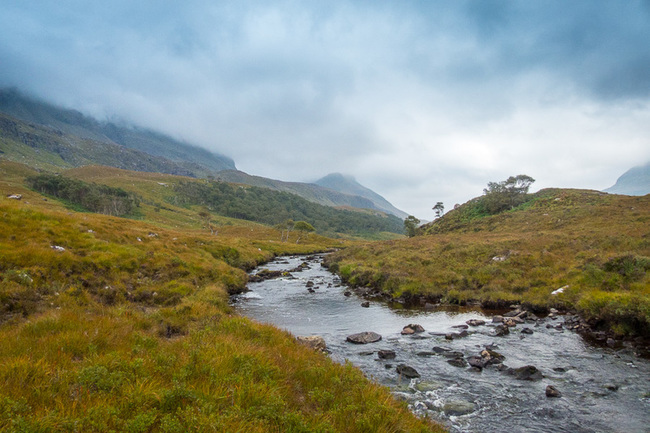
Choose a water source away from any obvious pollutants. A fast-flowing stream like this is ideal.
So, choose a water source that looks safe, where the water is reasonably clear and free from debris. A crystal clear mountain stream looks like a pretty safe bet and yes that’s much better than the other options, but you still can’t tell if the water contains bacteria or any other nasty surprises.
If you choose water sources that look clean and safe away from human or animal activity then you’re going to be pretty safe. You might not even bother with any water treatment and get away with it most of the time. I’m not a big fan of leaving my health to chance so I always treat the water I’m going to drink.
You’ve got a few options when it comes to treating water. You could simply bring it to a rolling boil for a few minutes which is easy to do and will kill off pretty much anything. It also makes the water taste bland and uses up a lot of fuel.
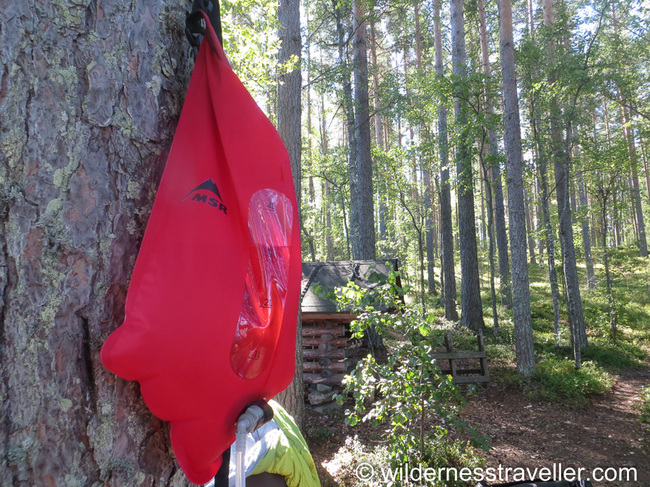
A simple gravity filter.
Other options include using a water filter or purification tablets. Filters vary from fiddly pumps to more simple gravity or squeeze varieties. Each offers a different level of protection. Some kill off everything from bacteria and protozoa to viruses and chemicals. Others aren’t so comprehensive in what they filter out.
Your choice depends on the area that you’re travelling in and the likelihood that you’re going to encounter each type of contaminant. Make sure that whatever system you choose, you know how to use it before you set off as well as how to maintain it in the field.
Conclusion
Wild camping is a fantastic way to get away from it all and enjoy the natural environment. Yes it takes some more thought than just rocking up at the campsite but you’ll never experience some of the most beautiful and unspoilt areas without going off the beaten track.
Wild camping isn’t difficult to do, nor does it have to be uncomfortable in any way as long as you follow some simple rules and techniques.
Hopefully you now know enough to give it a go, so let me know where you end up on your next adventure.
Share this Post

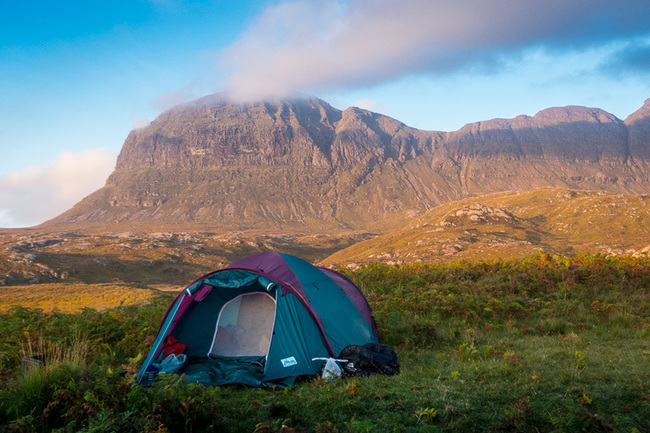
One Comment on “How To Go On Your First Wild Camping Adventure”
Hey very nice blog!